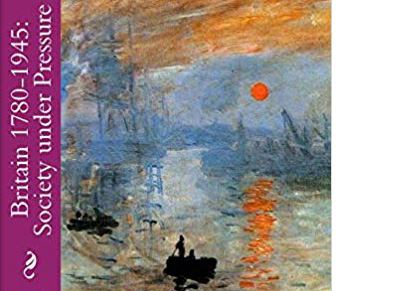Britain 1780-1945: Society under Pressure
Book review

Britain 1780-1945: Society under Pressure, Richard Brown, Authoring History, paperback, 2018, ISBN 9781985773370.
Richard Brown’s latest social history of Victorian and Edwardian Britain, like David Cannadine’s Victorious Century: The United Kingdom, 1800-1906, reflects at the outset, upon his good fortune to have grown up in the 1950s in what can be viewed in retrospect as ‘in many ways the final years of the long nineteenth century’. This he suggests was because the United Kingdom still considered itself ‘a formidable international power with both a large navy and global empire’ based upon the strength of its traditional staple industries created by the industrial revolution in the late-eighteenth century.
Brown’s survey of the intervening period in his fifty-third book displays all the characteristics of his previous works. It is stimulating and accessible, the product of a career focused predominantly upon classroom-teaching; well-researched and widely referenced and willing to re-visit hitherto neglected issues such as the increasing racial tensions in the years before and after the First World War.
Society Under Pressure re-examines critical developments in Britain’s industrialisation, its economic, demographic and transport developments, including and the revolution in how people and things were moved around the country’. It also scrutinizes Britain's belief systems and class structures, from its socially stratified railways to the class hierarchies revealed on the ill-fated Titanic where in third class there were only two baths to share between 710 passengers and where a far higher proportion of third-class passengers perished than those travelling in first and second-class accommodation in 1912.
This is the first instalment of a promised two-volume history whose sequel will be eagerly awaited by students who have valued his fresh insights into so many aspects of the period he was first drawn to, like many of his contemporaries, by the classic introductions of Sir John Clapham and Elie Halevy to the nineteenth century which forms the core content of this illuminating 544-page survey.

